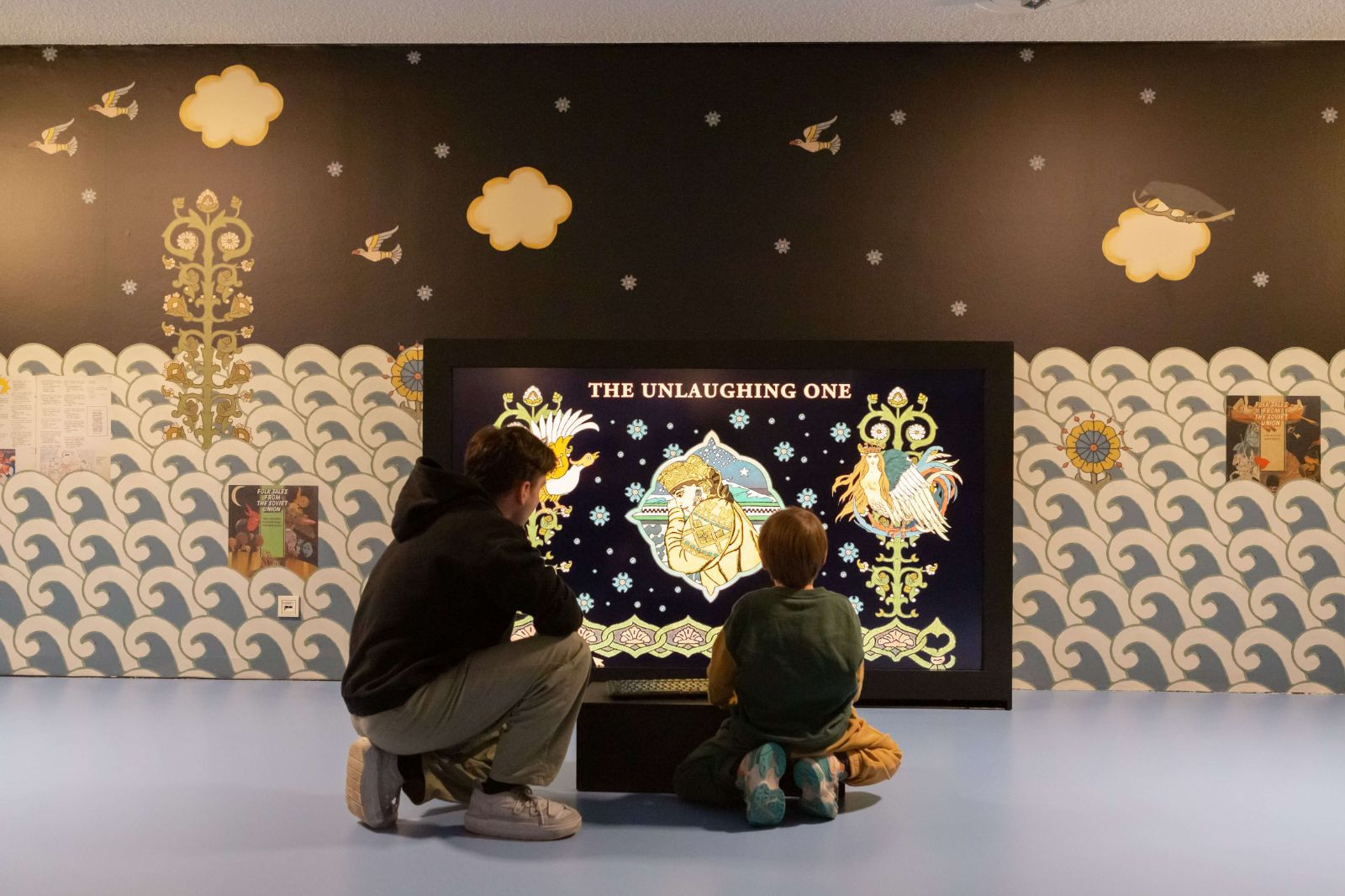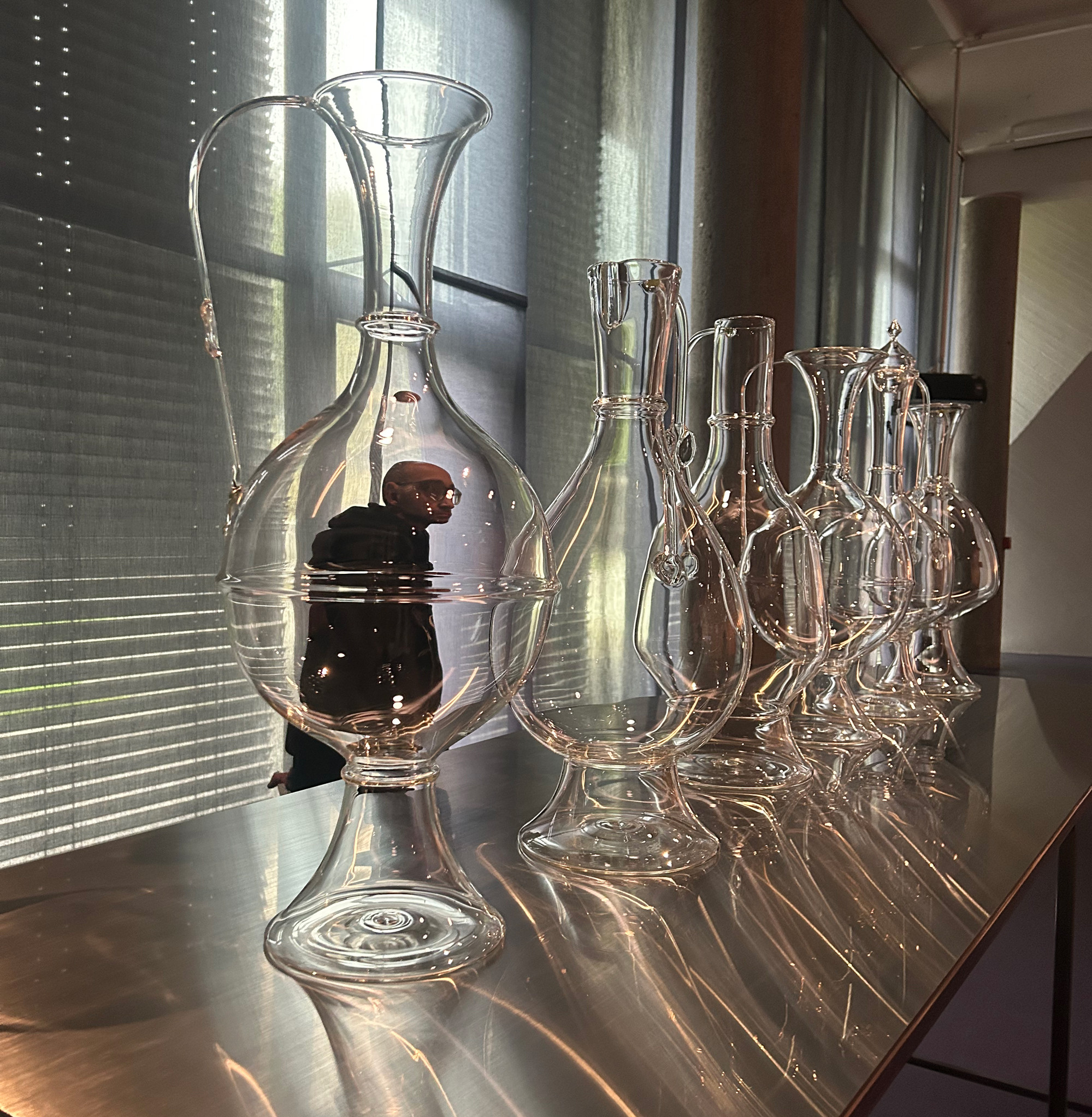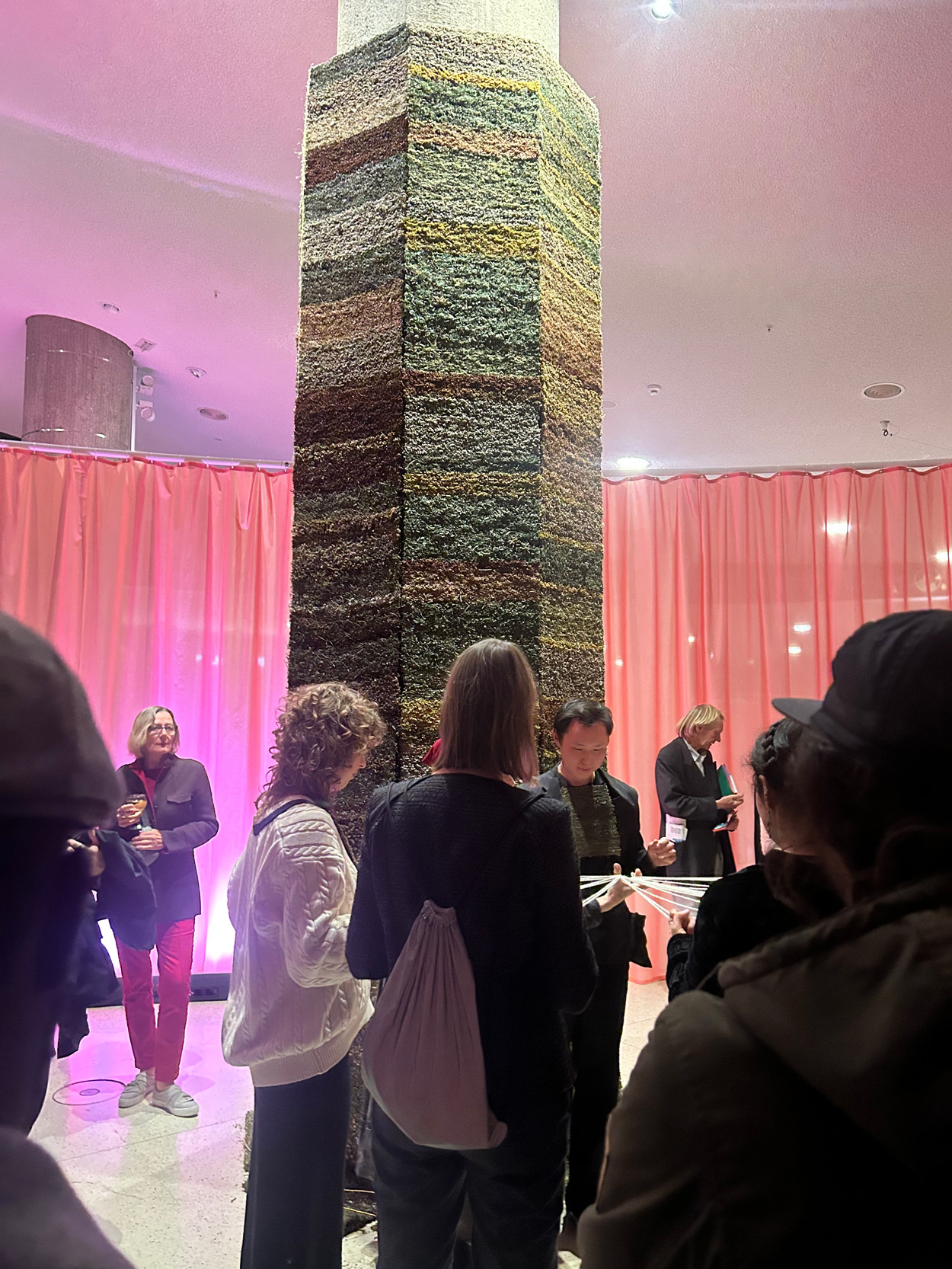The Sea Murmurs by Voices Rising under the Decaying Blanket
This text is born as a result of mutual talks, reflections, conversations, and contradictions with my curatorial colleagues from Ҳиқоя / Hiқoýa Collective from Kyrgyzstan, Oʻzbekiston, Tojikiston, Türkmenistan, and Russia, who possess local knowledge, critical views and sharp observations on Decoloniality and Imperial Narrations. I am extremely thankful to Altyn Kapal (ova), Aziza Kadyri, Lolisanam Ulug (ova), Marina Solntseva and Mayya Kelova for their insights and eagerness to talk and exchange nearby feelings, impressions and ideas.
This text is a reflection on names and blankets, inspired by the exhibition "As Though We Hid the Sun in a Sea of Stories. Fragments for a Geopoetics of North Eurasia" which opened at the Haus der Kulturen der Welt (HKW) Berlin on last October (21.10.2023–14.1.2024). The show’s curators — Cosmin Costinaș, Iaroslav Volovod, Nikolay Karabinovych, Saodat Ismailova, and Kimberly St. Julian-Varnon.
This text is a complication and a layering since blankets are brought into the room, let there be many of them.
Blankets can be very different, for example, sewn from different patches or on the contrary from a whole piece of fabric, with a clear pattern or mono-color. I place the blanket in the reflections on names because one can cover an object with a name, and then one may not even notice how the object itself has disappeared from under the name, and only the name remains for the discussion. Who is there under the blanket of "Eurasia"? Who made this blanket? Who is spreading this blanket and why? Is it necessary to follow this generalization method? Are there common universal concepts and feelings among those covered by "Eurasia"? To whom dedicated this discussion?
In my Russian-speaking childhood in Kyrgyzstan, there was a xenophobic Soviet joke "Why don’t two Indians freeze under the same blanket?". It implied that "Indians" were a certain group of people united by biologically insurmountable properties and by default not as civilized as Europeans. The xenophobic tone of this Soviet joke underscores the violence of generalizations made by an outside observer, one who is not part of those left under the blanket.
Another reference to the Soviet legacy and now the Russian imperialist reality is the concept of Eurasianism developed by Alexander Dugin, whose ideas are interpreted as fascist or at least imperialist. I think that Yaroslav Volovod, curator of this exhibition, and his colleagues are aware of the existence of such ideas and introduce the blanket "Eurasia" with this large field of meanings in mind. Eurasianism is an imperial ideology that explains Russia’s current isolationist, militaristic, and colonialist policies. The terms "Eurasianism" and "Eurasia" provide Russia with opportunities for colonial rhetoric and actions. This is one part of the Russian myth of its special position between Europe and Asia, and based on this, the imperialist power claims its specialness to its neighbors and the world, which it calls its "third way" (more on this in the book "Russian Eurasianism. An Ideology of Empire" by Marlène Laruelle). Edward Wadie Said wrote that "East" was not invented by those who found themselves under this huge generalization. Following his significant observation, I want to ask — why was the Eurasia blanket so important that it was even located in the subtitle of this exhibition?

And one more point from the glass elephant in a room right in the center of these conversations — Russian imperialism — the space "from the Volga to the Ganges" referred to in Afrah Shafiq’s "Nobody Knows for Certain" work. It refers to Rahul Sankrityayan’s short story collection Volga Se Ganga (Hindi वोल्गा से गंगा). And also reminds me of the words attributed to Russian politician Vladimir Zhirinovsky "Russian soldiers will wash their feet in the Indian Ocean". Imperial ambitions from the 21st century, refer us back to the days of the Great Game, when the Russian and British empires rushed to meet each other in the middle of lands inhabited by a multitude of people with multiple political identities, in a spur-of-the-moment colonizing contest of "Who will seize the most." Remarkably, Rahul Sankrityan’s account begins in 6000 B.C. and ends in 1942 when Mahatma Gandhi founded the "Quit India Movement" (Hindi भारत छोड़ो आन्दोलन). The exhibition space creates venues for a variety of voices that invite hidden Russian-Soviet imperialism to read Gandhi’s manifestos in anticipation of changes.

There is another important and resounding contradiction in the exhibition, which is best expressed in Aslan Goisum’s Untitled, a work about personal and collective memory. These are six water jugs from the 18th and 19th centuries found in Chechnya, Ingushetia, Dagestan, and Azerbaijan. These objects were not presented by themselves, but cast in glass by craftsmen from the island of Murano. The contradiction of the local memory of the people living in the Caucasus region, represented by the craftsmanship of European glassblowers, sounds even louder during the guided tour, when the curator, passing by the jugs, informs us that the artist has asked not to tell visitors anything about his work, and all those interested should be directed to the text about this work, printed in the handbook for the exhibition.
Back to the blankets. The exhibition itself, the individual works, and texts from the Handbook use the following blankets: North Eurasia, Central Eurasia, Turkestan, Global East, from Volga to Ganga… One of the curators of this exhibition, Yaroslav Volovod, refers to his work Space 1520, about the geography delineated by Russian-Soviet railroad lines. There are also blanket references for this space that are avoided in the texts about the exhibition that I have read — post-Soviet (the Russian term) and post-communist countries (the European term). This avoidance of apparently centralized violent terminology is remarkable in itself, it marks the problem and I would love to see it go much further, to the very rejection of one blanket for everything instead of inventing new bigger ones.

The problematic aspect of this gesture of covering multitudes with one blanket is that it takes away the subjectivity of those who are covered with it. I would like to mention one more metaphor in this thread: grass. Grass sprouting through a decayed blanket that will always be small and incapable of covering. The gesture of covering conceals the many and says much about the covering itself, rather than about those left under the blanket. It is certainly a gesture endowed with power and continues established patterns of power and violence. And through this point of view, the slits left to the visitor in the curtain (is it an iron one?) — the central design motif of this exhibition space — these slits mark spaces of disconnectedness and trampled grass. Emotionally very strong gesture despite the pleasant colors of this curtain.
Grass, is not a lawn at all, no. Grass comes together on its own and sprouts from below by itself. Grass with roots. The blanket with which it is covered will sooner or later decay and will be pierced by sprouts. And these are already different plants with different names. And I think it is important to give them a voice, as it is important to create spaces in which the grasses themselves create alliances and choose what to do with the blankets. Bonaventure Ndikung’s concept of the Global East, proposed in the introduction, suggests, by analogy with the Global South, just such independent communities and networks of communities from below. And these multiple suns are already manifesting themselves through the grasses of histories not hidden by the waves of "Eurasian" blankets. This is evident in the strong works of many artists and their voices brought together in the space of this exhibition. And these multiple suns are already showing through the grasses of stories, not hidden by the waves of "Eurasian" blankets.
